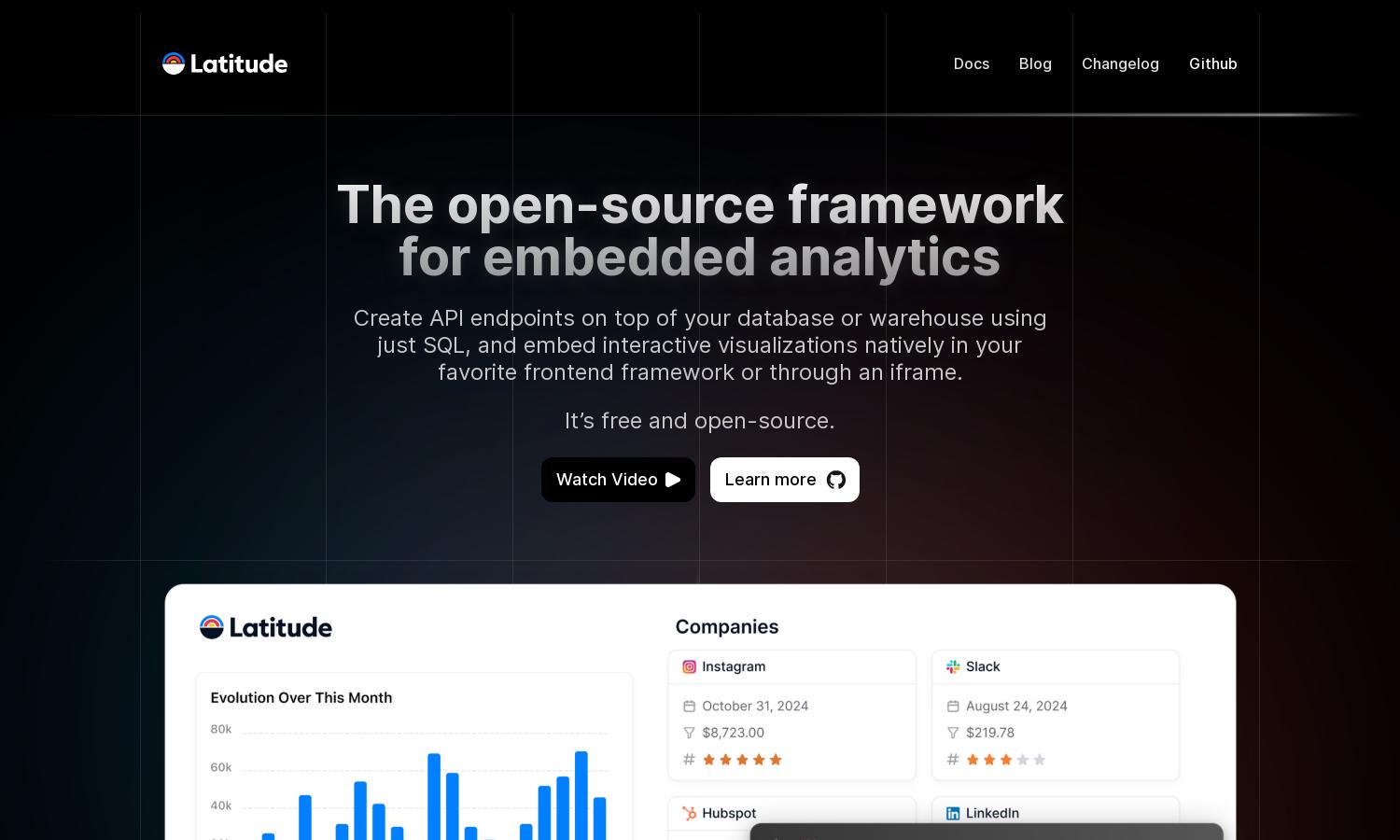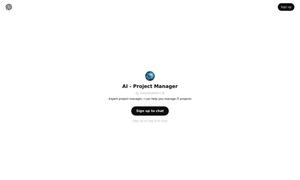Latitude

About Latitude
Latitude is a cutting-edge platform designed for prompt engineering, where domain experts and engineers unite. It streamlines the development of production-grade LLM features, ensuring quality and efficiency. Users benefit from collaborative tools, enhancing their LLM capabilities, and fostering innovation in tech solutions with Latitude’s unique focus.
Latitude offers flexible pricing plans tailored for diverse user needs. Options range from individual packages to team subscriptions, each providing distinct advantages, including enhanced support and additional features. Users who upgrade receive exclusive discounts and rewards, making it a worthwhile investment in their LLM development journey with Latitude.
Latitude boasts a user-friendly interface designed for seamless navigation and accessibility. Its intuitive layout enhances the overall user experience, allowing users to quickly engage with key features. The platform's thoughtful design prioritizes usability, making it an attractive choice for those seeking efficient prompt engineering solutions with Latitude.
How Latitude works
Users begin their journey with Latitude by signing up and completing a straightforward onboarding process. Once logged in, they access a collaborative workspace where domain experts can engage with engineers to brainstorm and refine prompts. Latitude facilitates project management, version control, and feature deployment, enhancing efficiency and effectiveness in LLM feature development.
Key Features for Latitude
Collaborative Prompt Engineering
Latitude’s collaborative prompt engineering feature allows teams to work together seamlessly in real-time. This unique aspect enhances communication between domain experts and engineers, ensuring that high-quality, production-grade LLM features are developed efficiently. Users benefit from a structured platform that fosters teamwork and innovation.
Production-Grade Feature Deployment
Latitude enables smooth deployment of production-grade LLM features, ensuring that users can implement their projects effectively. This key feature streamlines updates and maintenance, reducing downtime and enhancing overall project efficiency. With Latitude, users are empowered to deliver robust solutions that meet industry standards and demands.
Version Control Management
The version control management feature of Latitude allows users to track changes and manage project iterations effortlessly. This capability ensures that all modifications are documented, enabling teams to collaborate effectively and maintain consistent quality throughout the development process. Latitude’s version control empowers users to innovate while minimizing errors.
You may also like:








